Using Visual Storytelling in Your Nonprofit for Greater Impact
Visual Storytelling. According to the National Center for Charitable Statistics (NCCS), more than 1.5 million nonprofit organizations are registered in the US, which includes private foundations, public charities, the chambers of commerce, civil leagues, and fraternal organizations.
With only 20% of the nonprofits’ funding being unrestricted, about two-thirds of the nonprofits are unable to raise their budget over $500,000. They become stagnant at a point and gradually diminish in the dead-end alley, even if they’ve been a huge fundraising success before. But what gets them stalled and how come other organizations thrive? What are the challenges that each nonprofit comes across? Since funding is restricted for most nonprofit groups, the organizations that don’t invest in basic support and management have a hard time sustaining their impact.
It has also been noticed that 75% of the nonprofit organizations collect data, and few of them use the data. Most nonprofits are unable to prove the level of difference they’re making or determine the product’s outcome trajectory. Hence, the nonprofits cannot determine where they need to improve. With this challenge, another one arises - the hard access to funds. Grants can be more challenging than anything else for nonprofits. Nonprofit employees can feel burned out and leaders of nonprofits are not always determined to demonstrate their vision and goals in their practices.
Storytelling is a great way to make the donors see the efforts you’re putting into your work. It has the power to compel the readers to emphatically support the cause, depending on how well your story is presented. Storytelling – when it’s visualized – is a great way to express a deeper connection with the general audience and the target funders. That is why the successful nonprofits are climbing their ladder of success with innovative storytelling strategies and tackling their challenges in unique ways.
Why Every Non-Profit Sector Should Go For Visual Storytelling
While the market gets stiffer every moment and the competition gets tougher, it becomes even harder for the nonprofit to attract people to join their causes. But in the world we live in today, the nonprofit has an upper hand when it comes to storytelling.

When you understand the power of storytelling, the benefits that lie ahead of nonprofits become evident. What else can visual storytelling do to impact nonprofits? Some points are listed below.
- Understanding the value of storytelling in nonprofits
- Responding to the NGO competition
- Relating meaningful stories
- Increasing the chances of making an impact
- Innovative social media storytelling in nonprofits
- Using storytelling to connect with people
- Improving the chances of crowdfunding for nonprofits
Understanding the value of storytelling in nonprofits
When we’re talking about storytelling, it isn’t just any storytelling. We’re talking about visual storytelling and branding in the nonprofit sector. Studies have revealed that the human mind is able to process photos and images faster and better than words.
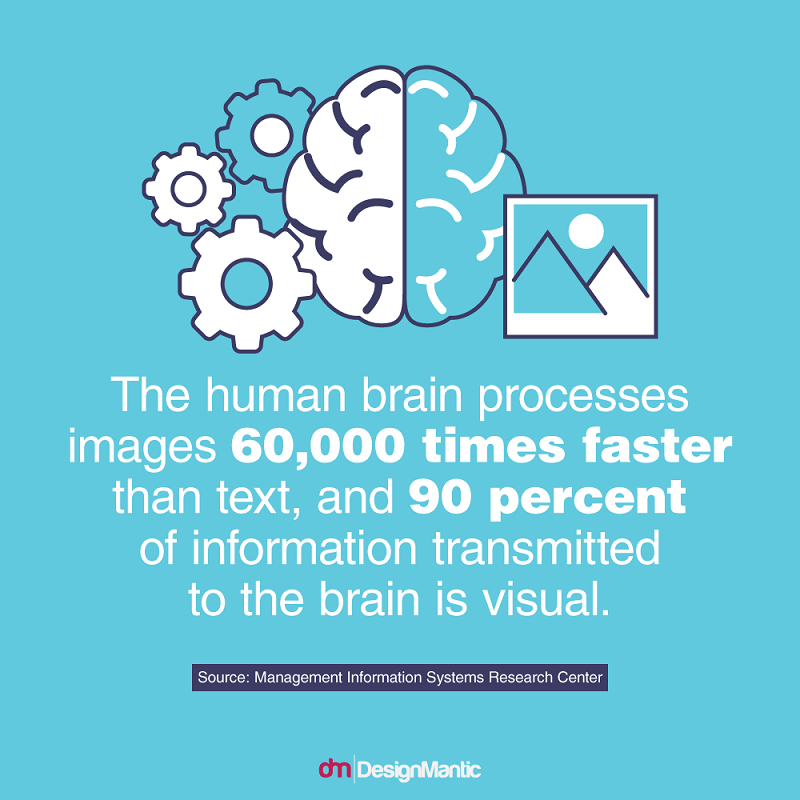
The same idea has given rise to the use of visuals in social media strategies. It has been noticed that people find infographics and images three times more appealing than written content. For that reason alone, it is highly important for nonprofits to incorporate visual storytelling.
Responding to the NGO competition
As discussed above, the competition to attract public attention makes it hard for competitors to keep up. Responding to the competition via using visuals is a great way to connect with the audience and the donors. This not only brings the nonprofit in line with the competitors but also makes them stand apart from the crowd.
The key to a great competition lies in the integration of multimedia stories that is different from the competitors. Invisible Children is a nonprofit organization that made a powerful impact on the world by releasing a 30-minute documentary. The video demanded action from the general public as well as the funders to arrest an African warlord who committed crimes against children. More than 3.7 million people supported the cause after watching the video.
Relating Meaningful Stories
A picture is worth a thousand words as well as a thousand ideas. Using visuals – whether be it pictures or videos – can truly depict the meaning behind the nonprofit’s approach. People are more captivated towards stories that are personal and emotionally compelling. Stories have the potential to impact the human brain, and that is why nonprofits can exploit storytelling to draw in people and funds. Here’s the science behind how emotional stories impact the brain: emotional stories release oxytocin, which is a hormone responsible for producing feelings of trust, empathy, compassion and generosity. This is what an NGO might want their donors to feel like when they’re considering donating to your organization.
The case of Habitat for Humanity is worth a mention here. This non-profit organization employs volunteer support to build homes for people in Europe, Middle East and Africa. The impact section in their site illustrates their work and progress in various regions as well as personal stories from people. Here’s what it looks like.
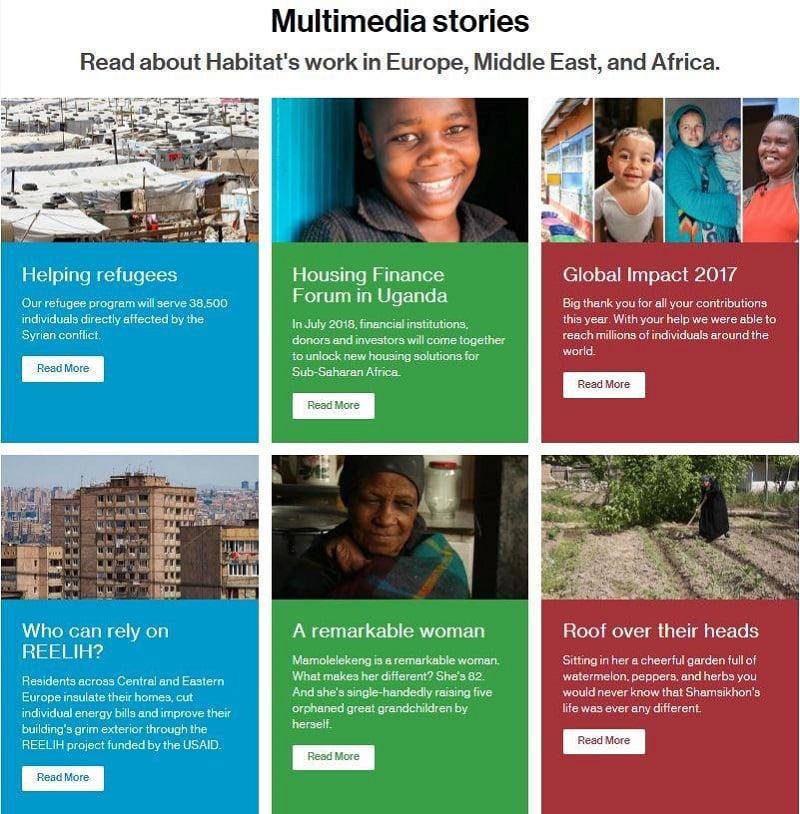
Increasing the Chance to Make an Impact
According to the whitepaper by Network of Good and Vanessa Chase, nonprofits are using a variety of channels for storytelling, which includes emails, videos, websites, blogs, events, and in-person meetings. Among the best practices identified, websites, videos, and emails remained the most crucial fundraising channels. This, however, tells us that the more channels a nonprofit approaches for storytelling, the better the chances are of the nonprofit making a lasting impact.
The impact can be made robust by using a public figure to voice out their non-profit approach. The renowned Hollywood actor, Ben Stiller, launched a non-profit fundraising campaign ‘The Stiller Foundation’, which aimed at building schools in Haiti. What made his approach popular was his series of viral YouTube videos that featured several famous personnel, hence raising more than $300,000. Here’s a video of Ben talking about the campaign, featuring Lance Armstrong.
Innovative Social Media Storytelling in the Nonprofit
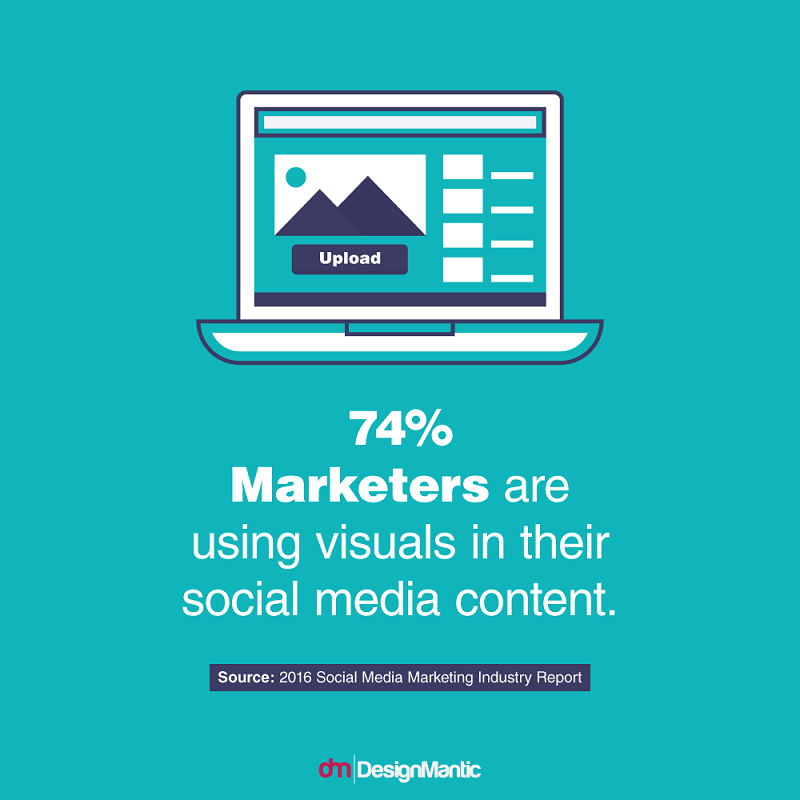
Since visuals are quite popular on social media, there is no reason why a non-profit shouldn’t be using it. If you know your audience and are backed by research, then the social media storytelling by a nonprofit can elicit an emotional response that will ultimately gain support and will demand a call for action.
Various nonprofits have been using several visual media strategies in one form or another, or an integration of both. Not only is social media storytelling limited to just videos and images; it also reaches out beyond via creative and innovative practices.
An evident example is the Project Life Jacket, which is a project run by three Swiss nonprofits. Apart from videos and visual stories posted on social media, this project aims to depict the stories of Syrian refugees (drawn over life jackets), which brings out the unique approach in the social media storytelling culture.
Using Storytelling to Connect With People
When people feel emotionally connected to something, they empathize on a personal level and try to connect individually. When a nonprofit uses visuals that embed a story of their own, the scientific trick might work well as many supports may gather to appreciate the cause when they can connect with it personally. For instance, an evident case comes from Generosity.org that shares and documents projects in progress on social media. Not only does it aim to bring clean drinking water to developing countries, but it also wants to empower local communities to take a stand.
Here’s a tweet from their Twitter profile.
For each new water project, we help establish a Water User Committee. These committees help create community ownership and sustainability! pic.twitter.com/DWV9h24n1r
— Generosity.org (@generosityorg) February 9, 2017
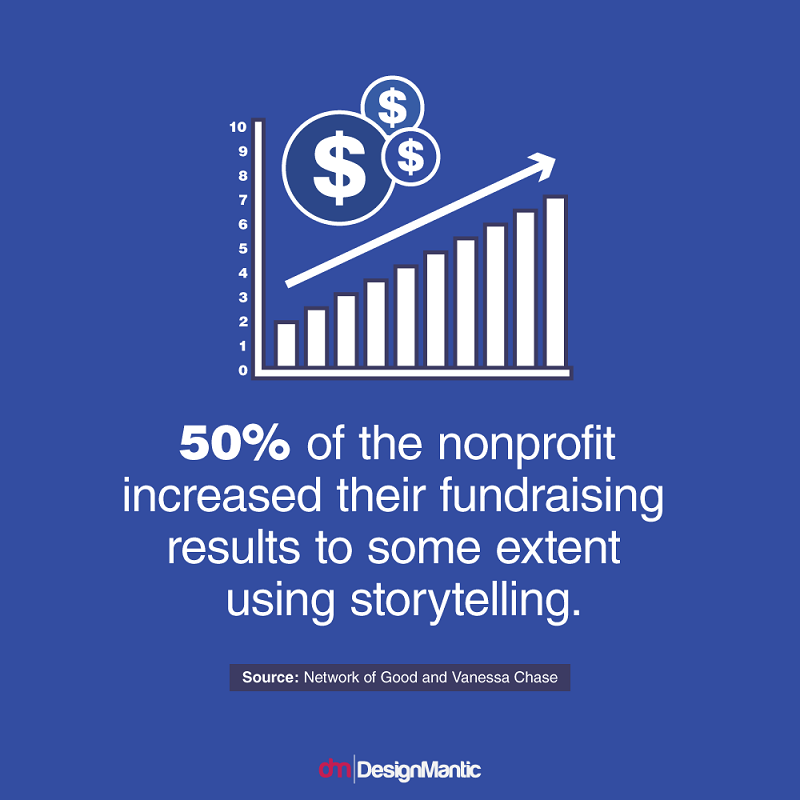
Improving the Chances of Crowdfunding for Nonprofit
When visual storytelling is backed with purpose and determination, the nonprofit can reach out to people and potential donors in many ways and improve their chances of fundraising. Moreover, using multiple approaches to crowdfunding helps an organization elevate its chances of getting noticed by donors. Nonprofits can share stories related to their clients, staff, volunteers, donors, and community to bridge the gap between the organization and its potential supporters. The Greater Boston Food Bank, Best Buddies International, and Macmillan Cancer Support are a few names to consider.
Strategies For Visual Storytelling In The Nonprofit Sector
Though storytelling using visuals can catapult a nonprofit organization to the sky, it still needs prior planning and strategies to make the storytelling worth it. That being said, here are a few visual storytelling strategies that nonprofits can use to maximize the impacts of their storytelling. The following points will be covered in this section.
- Use the Logical Model to Measure the Impact of Your Stories
- Test Your Nonprofit Stories with Multiple Tools and a Framework
- Initiate a Visual Storytelling Culture
- More Video, More Engagement
- Strategizing Your Visual Storytelling
- Make Storytelling Your Consistent Trait
Use the Logical Model to Measure the Impact of Your Stories
According to a research, storytelling hasn’t impacted fundraising negatively, but that shouldn’t stop nonprofits from measuring the impacts they’re making with their stories. It might strike as a challenge for many organizations, but the yields are greater. As a nonprofit, if you’re measuring data that comes from your visual storytelling, you’ll learn about your progress, the value of your content, and the factors affecting your success rate. Measuring the impact leads you to improve the quality of your visual content and affects your storytelling in turn.
Of all the tools used to measure the impact of visual storytelling within the nonprofit, the most common one is the logical model, which guarantees the implementation of best practices and the responsibility of its member agencies. This model allows the nonprofits to study the relationship between their resources, activities, and results via a systematic visual presentation. This process helps in pinpointing the results that are intended to occur by utilizing the resources and practicing the activities. You can use the same logical model to assess the impact your visual storytelling will cause. Here are examples of logical models from nonprofits, such as Shoes That Fit, LTCS Community Development Corporation, and Ink People Center for the Arts.
Test Your Nonprofit Stories with Multiple Tools and a Framework
When you’re managing your stories and want to add a new element or new visuals, you don’t have to be afraid to test your ideas. Ask yourself: Do these stories correspond with our goals? Are we projecting our message correctly? Will our audience perceive our message? You can start by testing stories of live people from the community and dramatize them to capture the interest of your audience. Plus, creativity is a must here, so make sure you employ creative ideas to depict enthralling stories. Also, if you’re supporting a general cause, you can also share stories of volunteers and tell the audience why they chose to support your organization.
Moreover, there are many tools you can use to integrate your message with a powerful image. You can use various tools, such as Canva, Xtensio Persona Tool, Hubspot Icon Kit, and Adobe Spark to come up with innovative and out-of-the-box visual storytelling ideas. After using these tools, devise a structure, organize the process, and analyze the content. Then evaluate the overall structure, the process, and the story. The combination of such contents will help you develop a robust framework for your impactful story.
Initiate a Visual Storytelling Culture
As a nonprofit organization, you have the utmost advantage of not running out of stories and ideas. That’s because many people gather under one name and work to support the cause. However, it is important that the staff and the supporters must collaborate and break the tension building up in between them. Moreover, make time for visual storytelling. Craft visuals or even ask volunteers for their contributions. Invite more people and share the updates on your visuals. This will give your nonprofit brand significant story leads and will promote a culture of storytelling.
One notable example is that of the San Francisco Marin Food Bank that draws stories from the staff and volunteers and inspires others to join their cause.
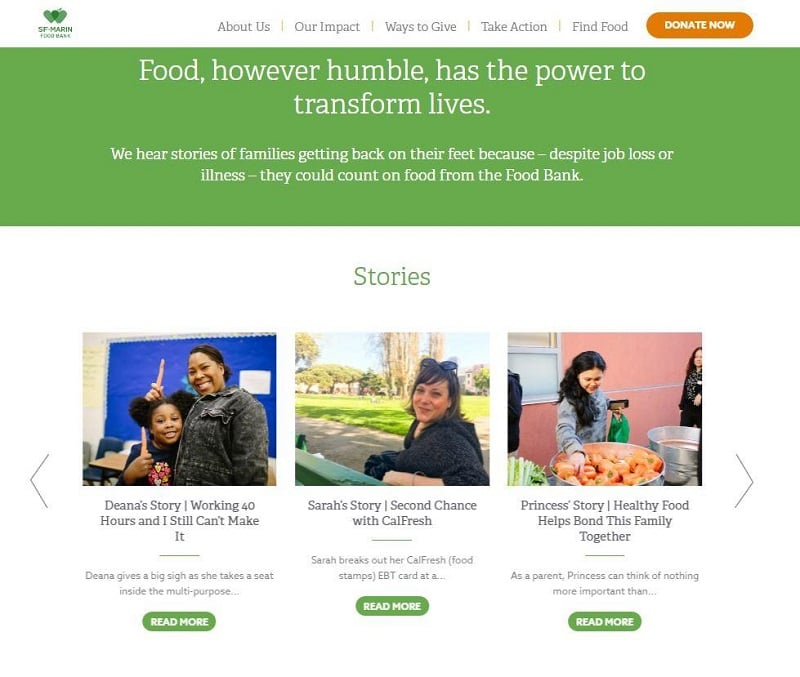
More Video, More Engagement

Any nonprofit can actively produce videos for increased engagement and fundraising. They can employ many tactics when using the video approach, such as using smartphones to make videos, sharing bite-sized information and updates, making sharing easier across multiple platforms, and tracking the audience engagement.
Do you know what works when it comes to providing motion to your visual story? Research your favorite nonprofit videos and think about why you like them. You can also study news documentaries featuring human stories, for inspiration. It isn’t the organization that counts; it’s the people and the basic storytelling concepts. Grasp them and you’re good to go. You can check out CNN’s Heroes, NBC’s Making a Difference, and CTV’s Local Heroes.
Strategizing Your Visual Storytelling
It’s no new fact that one has to approach multiple channels to raise funds. You probably know that limiting yourself to just one medium will reduce your chances of interacting with potential donors. That is why you need a multichannel approach, such as email, website, social media presence, newsletter, and so on, to propagate your visuals and reach more donors.
Whether it’s your fundraising strategy or your communications plan, you can integrate storytelling to keep getting an increased response from the supporters and develop the internal vision. If you like to experiment with storytelling and want learn to tell each story differently from another, then the book 99 Ways to Tell a Story: Exercises in Style by Matt Madden is your ultimate guide. This book features a single story in 99 different ways, and that is what a foolproof chance of what opportunities there are for storytellers, especially nonprofits.
Make Storytelling Your Consistent Trait
Stories are evergreen, but visuals are even greener. The creation of visual content takes time. However, if you’re smart enough, you’ll think about ways to use the content more than twice, but in a new manner. The key here is to use the content that remains consistent with your approach or campaign.
For example, if you’re introducing a series of short documentaries on social media, make sure you remain consistent in promoting that content and keeping track of your audience’s activity. Moreover, the content must remain fluid throughout. Consider your audience’s likes and dislikes and craft your stories accordingly. Plus, incorporating technology in your storytelling journey is a good and effective way to keep up the good work. For instance, Charity: Water swayed the donors off their feet by taking them on a virtual visit to Ethiopia. Using the virtual reality technology, the viewers were able to witness the need of clean drinking water.
Conclusion
Without a doubt, storytelling can be a great tool to engage with your audience. Visuals, when incorporated with storytelling, encapsulate the power to stir people’s emotions and evoke emotional responses. If you’re a nonprofit of any sort, you can think about how you can introduce visuals in your efforts for storytelling.
Plus, from a broader perspective, visual storytelling isn’t just confined to images; you can add creative and customized media in the form of videos, infographics, animations, gifs and much more. Anyhow, you can make use of many resources online to inspire your visual storytelling.
References:
https://www.fastcompany.com/40552662/5-ways-the-nonprofit-industry-is-failing-and-how-overcome-them
http://grantspace.org/tools/knowledge-base/Funding-Research/Statistics/number-of-nonprofits-in-the-u.s
http://www.fundraising123.org/files/State-of-Storytelling-in%E2%80%93the%E2%80%93Nonprofit-Sector.pdf
https://www.sciencedirect.com/science/article/pii/S0885201409000471
https://link.springer.com/article/10.1007%2FBF02765184
https://hbr.org/2014/10/why-your-brain-loves-good-storytelling
https://www.socialmediaexaminer.com/wp-content/uploads/2016/05/SocialMediaMarketingIndustryReport2016.pdf
https://www.statista.com/topics/1137/online-video/
https://thestorytellingnonprofit.com/5-resources-for-visual-storytelling/
https://www.adweek.com/digital/how-virtual-reality-inspiring-donors-dig-deep-charitable-causes-171641/
How Do I Build An Audience On Social Media? [Free Ebook]
By clicking the button you agree to the Privacy Policy and Terms and Conditions.
Read Also
How to Plan Your Visual Content Marketing Strategy
4 Compelling Ways to Make Your Homepage More Visual
Best Visual Composer Plugins For Your WordPress Website
Boost Sales with Video Content-Storytelling in B2B Marketing
Don’t miss out these all-time favourites
- The best hosting for a WordPress website. Tap our link to get the best price on the market with 82% off. If HostPapa didn’t impress you check out other alternatives.
- Website Installation service - to get your template up and running within just 6 hours without hassle. No minute is wasted and the work is going.
- ONE Membership - to download unlimited number of WordPress themes, plugins, ppt and other products within one license. Since bigger is always better.
- Ready-to-Use Website service is the ultimate solution that includes full template installation & configuration, content integration, implementation of must-have plugins, security features and Extended on-page SEO optimization. A team of developers will do all the work for you.
- Must-Have WordPress Plugins - to get the most essential plugins for your website in one bundle. All plugins will be installed, activated and checked for proper functioning.
- Finest Stock Images for Websites - to create amazing visuals. You’ll get access to Depositphotos.com to choose 15 images with unlimited topic and size selection.
- SSL Certificate Creation service - to get the absolute trust of your website visitors. Comodo Certificate is the most reliable https protocol that ensures users data safety against cyber attacks.
- Website speed optimization service - to increase UX of your site and get a better Google PageSpeed score.
Get more to your email
Subscribe to our newsletter and access exclusive content and offers available only to MonsterPost subscribers.

Leave a Reply
You must be logged in to post a comment.